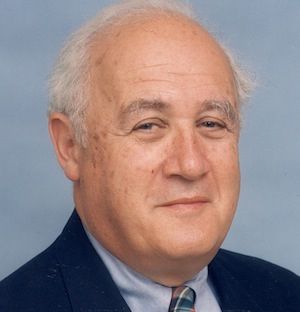Restoring the Path to Multidisciplinary Chronic Pain Management
Although the concept of delivering chronic pain care through multidisciplinary clinics is less than half a century old, John Loeser, MD, believes the model has already surpassed its peak in the United States, mainly due to financial reasons.

Although the concept of delivering chronic pain care through multidisciplinary clinics is less than half a century old, John Loeser, MD, of the University of Washington (UW) School of Medicine, believes the model has already surpassed its peak in the United States, mainly due to financial reasons.
But during his plenary lecture at the American Pain Society 33rd Annual Scientific Meeting, held April 30, 2014, to May 3, 2014, in Tampa, FL, Loeser also expressed anticipation for a resurgence of the concept’s implementation, given the current healthcare structure “emphasizes more outcomes data and switches from a procedurally driven system to one that looks at the outcomes more than the incomes.”
To explain how the multidisciplinary pain management model was first developed, Loeser provided a quick overview of the key players in the history of pain clinics. While F.A. Duncan Alexander, MD, and William K. Livingston, MD, each experimented with early multidisciplinary pain clinics in the late 1940s and early 1950s, John J. Bonica, MD, truly forced the growth of the concept in 1946 by establishing the first clinic staffed by different medical specialists and nurses in Tacoma, WA, Loeser said.
Not long after Bonica joined the UW faculty as Chairman and Professor of the Department of Anesthesiology in 1960, Bill Fordyce, PhD, a pioneer on the clinical psychology of chronic pain, began participating in the medical school’s clinic, where he “appl(ied) behavioral medicine to pain and made early observations of the role of social reinforcers in pain behaviors,” Loeser noted.
With the emergence of that behavioral avenue to pain care, UW granted Fordyce and Loeser an independent yet multidisciplinary hospital ward for inpatient and outpatient pain management in 1983. The resulting Multidisciplinary Pain Center (MPC) implemented the biopsychosocial approach to pain management that displaced the traditional biomedical model in the 1970s, although Loeser said “it’s fair to say that even today, a significant number of physicians appear to be locked into the traditional biomedical model.”
Within the MPC, Loeser explained chronic pain was viewed as “a psychological and environmental disorder that is rarely amenable to biologically based ‘fixing,’ especially by the time of referral.”
“The idea was to treat pain behaviors, because there is no tank where you can put a dipstick to measure a patient’s pain,” he said. “You can only measure pain based on what the patient self-reports; you cannot measure pain itself.”

According to Loeser, the typical chronic pain patient treated at the MPC had durations of pain exceeding the standard healing time, diagnoses that did not explain their pain, disability, depression, multiple healthcare providers, and inappropriate medications. In other words, throughout the years leading up to their referrals to the MPC, the patients “were like a billiard ball caroming off one cushion to another cushion, as each physician referred them to another physician,” Loeser explained.
Noting that “symptom relief and functional improvement are the goals of treating chronic pain patients, not finding a cure,” Loeser said the MPC focused on reducing self-reported pain, improving psychological well-being and physical condition, and managing opioid use appropriately.
To accomplish the latter goal, Loeser and his colleagues required patients taking multiple opioids from different prescribers to relent that the medications were not solving the problem, as they all complained of pain and disability despite their heavy opioid use. The MPC team then implemented a “pain cocktail” tapering strategy and informed the patients that “by the 21st day, they would be off all opioids,” Loeser said. However, he pointed out that the clinic “never saw the mega-doses of opioids that are so common now, so I’m not sure if this strategy would work on today’s mega-dose patients.”
Nevertheless, Loeser concluded “multidisciplinary pain clinics remain the best available treatment for appropriately selected pain patients … (and) I think the lessons learned in the clinics can be translated into an individual practitioner’s methods of managing chronic pain patients.”
“These strategies should be utilized to the greatest extent possible, even if the resource of the clinic is not available,” he urged. “The individual practitioner should be more than a monodisciplinary provider.”